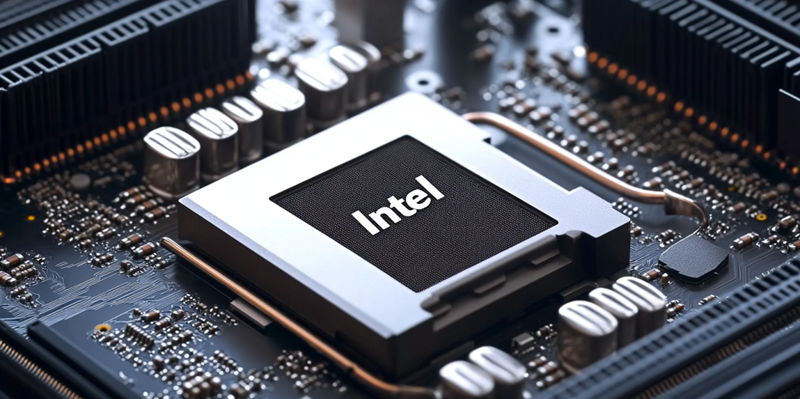Intel has yet again taken a bold leap in the CPU market with its latest release, the Core Ultra 9 285K. As part of the Core Ultra 200S family, this processor promises enhanced power and efficiency metrics, setting high expectations among tech enthusiasts and industry analysts. The flagship CPU’s benchmark results, especially when compared to its predecessors and direct competitors like AMD’s Ryzen 9 9950X, reveal an interesting landscape of performance gains and energy efficiency. This analysis dives into whether Intel’s Core Ultra 9 285K has indeed set a new benchmark in the CPU market, reshaping future expectations for desktop processors.
A New Era of Performance and Power Consumption
The Core Ultra 9 285K has undergone extensive testing to evaluate its performance under extreme conditions. During these benchmarks, the CPU consumed between 360W to 370W of power, a substantial increase from its initial figures, which highlights its capability to handle demanding tasks. Specifically, in the Cinebench R23 test, the CPU package power peaked at an impressive 370.5W, demonstrating its ability to maintain high performance under strenuous conditions. Despite this increased power draw, the Core Ultra 9 285K managed to achieve notable results.
In the Cinebench R23 benchmark under extreme performance profiles, the processor scored 46,289 points. This places it marginally behind the AMD Ryzen 9 9950X, which scored 46,904 points at a comparatively lower power consumption of 253W. This performance suggests a balance between power consumption and efficiency, pushing the Core Ultra 9 285K close to the top of the competitive landscape in terms of raw horsepower. Such outcomes provide a glimpse into how Intel’s new processor handles intensive tasks, yet it also raises questions about power management efficiency when compared to its peers.
Comparative Benchmark Analysis
When diving into comparisons, it becomes clear how the Core Ultra 9 285K stacks up against both AMD and previous Intel models. The AMD Ryzen 9 9950X displays impressive efficiency with scores of 46,904 points at 253W, 46,090 points at 230W, and 44,782 points at 200W. This indicates AMD’s strong performance per watt management, which signifies that efficiency and raw performance are not necessarily mutually exclusive. The power-to-performance ratio of the Ryzen 9 9950X demonstrates AMD’s commitment to energy-efficient yet powerful processing units.
Intel’s preceding model, the Core i9-14900KS, also provides a useful comparison point. The Core Ultra 9 285K outperformed the Core i9-14900KS, which scored 42,678 points under extreme conditions. This stark performance difference highlights the advancements Intel has made in developing its new processor. These comparisons not only underscore the efficiency and power of the Core Ultra 9 285K but also contextualize its higher power consumption in light of the significant gains in performance per watt. For consumers and industry professionals alike, these benchmarks offer a comprehensive look at where Intel’s new CPU stands in the current market landscape.
Technological Advancements and Efficiency Enhancements
One of the major talking points about the Core Ultra 9 285K is its efficiency. While the power consumption in certain conditions appears high, the real story lies in the performance gains achieved per watt. This aligns with a broader industry trend of balancing raw power with efficiency, as both consumers and professionals seek high-performance CPUs that do not excessively drain energy resources. The Core Ultra 9 285K, clocking its P-Cores at 5.6 GHz and E-Cores at 3.9 GHz, showcases significant technological advancements over previous generations.
These enhancements are part of Intel’s strategy to push the envelope of what desktop CPUs can achieve in terms of speed, multitasking, and overall performance. By optimizing the performance of both its performance cores (P-Cores) and efficiency cores (E-Cores), Intel aims to offer consumers a balanced and powerful processing unit that caters to a variety of computing needs. The emphasis on higher clock speeds and efficient performance encapsulates Intel’s ongoing efforts to innovate and set new benchmarks in the desktop CPU market.
Impact on the High-Performance CPU Market
As we approach the official launch of the Core Ultra 9 285K on October 24th, it’s worth considering the broader impact of this release on the high-performance CPU market. By setting new benchmarks in both performance and power efficiency, Intel aims to redefine consumer expectations and set new standards for future CPU designs. The promising results from benchmark tests suggest that the Core Ultra 9 285K could establish Intel as a formidable leader in the desktop processor market.
This advancement represents not just an incremental improvement but a significant leap forward, showcasing Intel’s commitment to innovation and excellence. The positive reception from early benchmarks is poised to create ripple effects across the industry, prompting competitors to elevate their offerings. For consumers, this means a new era of high-performance, energy-efficient desktop computing is on the horizon, promising enhanced productivity and experience.
The Competitive Landscape
Intel has made waves in the CPU market with its latest release, the Core Ultra 9 285K. As a significant member of the Core Ultra 200S series, this processor aims to deliver superior power and efficiency. Tech enthusiasts and industry analysts are highly optimistic about its potential. When comparing benchmark results, the Core Ultra 9 285K stands out in terms of performance gains and energy efficiency, especially when set against its predecessors and fierce competitors like AMD’s Ryzen 9 9950X.
This new processor isn’t just about marginal improvements; it represents a significant leap forward in technology. Intel’s advanced manufacturing process and cutting-edge engineering have culminated in a CPU that some believe sets a new industry standard. The benchmarks show noticeable improvements in speed and multitasking capabilities, tightly intertwining with lower power consumption, which is crucial in today’s eco-conscious technology landscape. The Core Ultra 9 285K might very well reshape future expectations for desktop processors, potentially setting a new gold standard in the industry.

